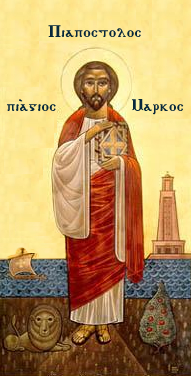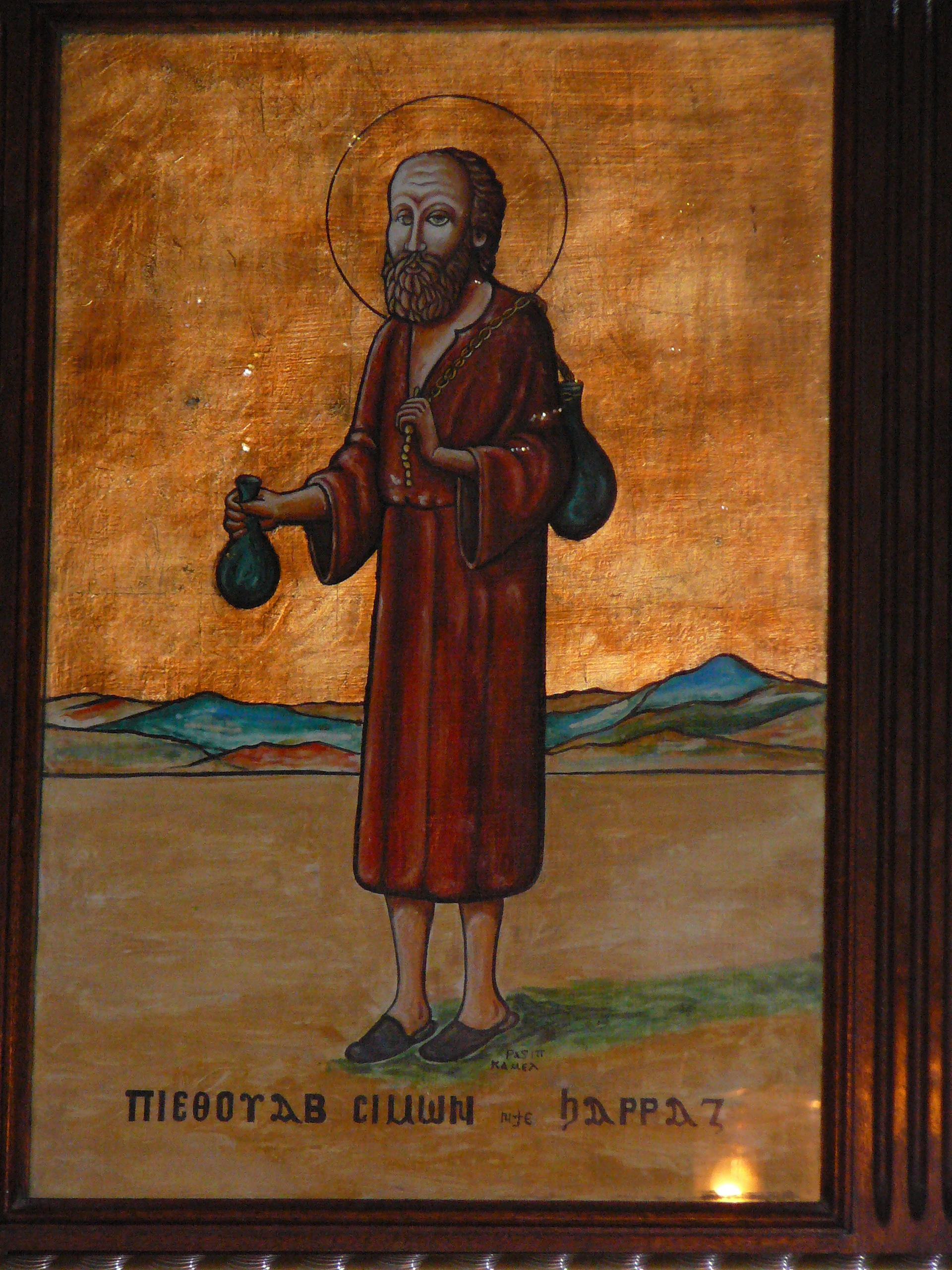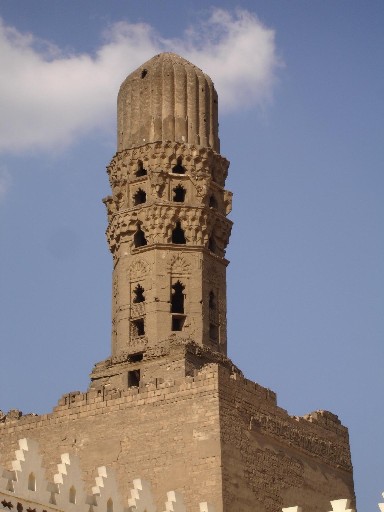|
Pope Zacharias Of Alexandria
Pope Zacharias of Alexandria, was the 64th Pope of Alexandria and Patriarch of the See of St. Mark. He was a native of Alexandria and was an ordained priest there. He was chaste and gentle in disposition. According to Abu al-Makarim, writing in the last quarter of the twelfth century, Zacharias was the last Patriarch of Alexandria to send letters to the rulers of Nubia and Ethiopia, having been forbidden to do so by the Fatimid Caliph Al-Hakim bi-Amr Allah. Nevertheless, if the Caliph or his vizier received a letter from either ruler, it remained the duty of the Patriarch to write a reply.B.T.A. Evetts (translator), ''The Churches and Monasteries of Egypt and Some Neighboring Countries attributed to Abu Salih, the Armenian'', with added notes by Alfred J. Butler (Oxford, 1895), p. 290 Pope Zacharias was buried in Saint Mary Church (Babylon Al-Darag) in Coptic Cairo Coptic Cairo (Arabic: القاهرة القبطية, romanized: ''al-Qāhira al-Qibṭiyya'', lit. Coptic ... [...More Info...] [...Related Items...] OR: [Wikipedia] [Google] [Baidu] |
Pope Of The Coptic Orthodox Church
The pope (; ), officially the pope of Alexandria and the patriarch of the see of St. Mark, also known as the bishop of Alexandria, or the patriarch of Alexandria, is the leader of the Coptic Orthodox Church, with ancient Christian roots in Egypt. The primacy of the Patriarch of Alexandria is rooted in his role as successor to Saint Mark, who was consecrated by Saint Peter, as affirmed by the Council of Nicaea. It is one of three Petrine Sees affirmed by the council alongside the Patriarch of Antioch and the Pope of Rome. The current holder of this position is Pope Tawadros II, who was selected as the 118th pope on November 18, 2012. Following the traditions of the church, the Pope is chairman and head of the Holy Synod of the Coptic Orthodox Patriarchate of Alexandria. The Holy Synod is the highest authority in the Church of Alexandria, which has between 12 and 18 million members worldwide, 10 to 14 million of whom are in Egypt. The pope is also the chairman of ... [...More Info...] [...Related Items...] OR: [Wikipedia] [Google] [Baidu] |
Nubia
Nubia (, Nobiin language, Nobiin: , ) is a region along the Nile river encompassing the area between the confluence of the Blue Nile, Blue and White Nile, White Niles (in Khartoum in central Sudan), and the Cataracts of the Nile, first cataract of the Nile (south of Aswan in southern Egypt) or more strictly, Al Dabbah, Sudan, Al Dabbah. It was the seat of one of the earliest civilizations of ancient Africa, the Kerma culture, which lasted from around 2500 BC until its conquest by the New Kingdom of Egypt under Pharaoh Thutmose I around 1500 BC, whose heirs ruled most of Nubia for the next 400 years. Nubia was home to several African empires, empires, most prominently the Kingdom of Kush, which conquered Egypt in the eighth century BC during the reign of Piye and ruled the country as its Twenty-fifth Dynasty of Egypt, 25th Dynasty. From the 3rd century BC to 3rd century AD, northern Nubia was invaded and annexed to Egypt, ruled by the Ptolemaic Kingdom, Greeks and Roman Empire, R ... [...More Info...] [...Related Items...] OR: [Wikipedia] [Google] [Baidu] |
Burials At The Church Of The Holy Virgin (Babylon El-Darag)
Burial, also known as interment or inhumation, is a method of final disposition whereby a dead body is placed into the ground, sometimes with objects. This is usually accomplished by excavating a pit or trench, placing the deceased and objects in it, and covering it over. A funeral is a ceremony that accompanies the final disposition. Evidence suggests that some archaic and early modern humans buried their dead. Burial is often seen as indicating respect for the dead. It has been used to prevent the odor of decay, to give family members closure and prevent them from witnessing the decomposition of their loved ones, and in many cultures it has been seen as a necessary step for the deceased to enter the afterlife or to give back to the cycle of life. Methods of burial may be heavily ritualized and can include natural burial (sometimes called "green burial"); embalming or mummification; and the use of containers for the dead, such as shrouds, coffins, grave liners, and burial ... [...More Info...] [...Related Items...] OR: [Wikipedia] [Google] [Baidu] |
Coptic Orthodox Saints
Coptic may refer to: Afro-Asia * Copts, an ethnoreligious group mainly in the area of modern Egypt but also in Sudan and Libya * Coptic language, a Northern Afro-Asiatic language spoken in Egypt until at least the 17th century * Coptic script, the script used for writing the Coptic language, encoded in Unicode as: ** Greek and Coptic (Unicode block), a block of Unicode characters for writing the Coptic language, from which Coptic was disunified in Unicode 4.1 ** Coptic (Unicode block), a block of Unicode characters for writing the Coptic language, introduced in Unicode 4.1 ** Coptic Epact Numbers, a block of Unicode characters for writing Coptic numerals * Coptic Orthodox Church of Alexandria or Coptic Church, the largest Christian church in Egypt and the Middle East * Coptic Catholic Church, an Alexandrian Rite particular Church * Coptic architecture, the architecture of the Copts * Coptic binding or Coptic sewing, methods of bookbinding employed by early Christians in Egypt Other ... [...More Info...] [...Related Items...] OR: [Wikipedia] [Google] [Baidu] |
List Of Coptic Popes
The following is a list of all of the Coptic Orthodox popes who have led the Coptic Orthodox Church and have succeeded the Apostle Mark the Evangelist in the office of Bishop of Alexandria, who founded the Church in the 1st century, and marked the beginning of Christianity in Africa. The Coptic Orthodox Church is one of the Oriental Orthodox churches (not to be confused with the Byzantine Orthodox group of churches) and is presided over by the Pope and Patriarch of Alexandria who is the body's spiritual leader. This position is held since 2012 by Pope Tawadros II, the 118th Pope of Alexandria and Patriarch of all Africa on the Holy See of St. Mark. The Oriental Orthodox believe that they are the "one, holy, catholic, and apostolic" Church of the ancient Christian creeds. To this date 92 of the Coptic Popes have been glorified, i.e., canonized as saints, in the Coptic Orthodox Church. Title "Pope" The title "pope" (in Greek, ''Papás'') originally was a form of addr ... [...More Info...] [...Related Items...] OR: [Wikipedia] [Google] [Baidu] |
Coptic Cairo
Coptic Cairo (Arabic: القاهرة القبطية, romanized: ''al-Qāhira al-Qibṭiyya'', lit. Coptic Cairo) is a part of Old Cairo which encompasses the Babylon Fortress, the Coptic Museum, the Hanging Church, the Greek Church of St. George and many other Coptic churches and historical sites. It is believed in Christian tradition that the Holy Family visited this area and stayed at the site of Saints Sergius and Bacchus Church (Abu Serga). Coptic Cairo was a stronghold for Christianity in Egypt both before and during the Islamic era, as most of its churches were built after the Muslim conquest of Egypt in the 7th century. History Ancient and Roman periods There is evidence of settlement in the area as early as the 6th century BC, when Persians built a fort on the Nile, north of Memphis. The Persians also built a canal from the Nile (at Fustat) to the Red Sea. The Persian settlement was called Babylon, reminiscent of the ancient city along the Euphrates, and i ... [...More Info...] [...Related Items...] OR: [Wikipedia] [Google] [Baidu] |
Saint Mary Church (Babylon Al-Darag)
The Church of the Holy Virgin in Babylon El-Darag (Babylon of the Steps) () is a Coptic Orthodox church in Coptic Cairo built in the 11th century AD. History The Church of the Holy Virgin in Babylon El-Darag was occupied from the 11th to the 15th centuries by several Coptic patriarchs, seven of whom were buried in the church. Pope Zacharias was one of them. Pope Cyril VI of Alexandria used to pray in the church before assuming papacy. According to tradition, the church was one of the resting places of the Holy Family during their sojourn in Egypt, as well as the location from which Peter sent his epistle (1 Peter 5:13). The relics of saints Demiana and Simon the Tanner are contained in the church as well. Architecture The ground plan of the church is typical of other Coptic churches: a narthex, a nave, a choir, northern and southern aisles and three sanctuaries. The northern sanctuary is dedicated to the Virgin Mary and the southern sanctuary is used as a shrine. It contains ... [...More Info...] [...Related Items...] OR: [Wikipedia] [Google] [Baidu] |
Al-Hakim Bi-Amr Allah
Abu Ali al-Mansur (; 13 August 985 – 13 February 1021), better known by his regnal name al-Hakim bi-Amr Allah (), was the sixth Fatimid caliph and 16th Ismaili imam (996–1021). Al-Hakim is an important figure in a number of Shia Ismaili sects, such as the world's 15 million Nizaris and 1–2 million Musta'lis, in addition to 2 million Druze. (''Which page?'') Histories of al-Hakim can prove controversial, as diverse views of his life and legacy exist. Historian Paul Walker writes "Ultimately, both views of him, the mad and despotic tyrant (like Germanic and Roman despots) irrationally given to killing those around him on a whim, and the ideal supreme ruler, divinely ordained and chosen, whose every action was just and righteous, were to persist, the one among his enemies and those who rebelled against him, and the other in the hearts of true believers, who, while perhaps perplexed by events, nonetheless remained avidly loyal to him to the end." Appraisals of ... [...More Info...] [...Related Items...] OR: [Wikipedia] [Google] [Baidu] |
Fatimid
The Fatimid Caliphate (; ), also known as the Fatimid Empire, was a caliphate extant from the tenth to the twelfth centuries CE under the rule of the Fatimid dynasty, Fatimids, an Isma'ili Shi'a dynasty. Spanning a large area of North Africa and West Asia, it ranged from the western Mediterranean Sea, Mediterranean in the west to the Red Sea in the east. The Fatimids traced their ancestry to the Islamic prophet Muhammad's daughter Fatima and her husband Ali, the first Shia, Shi'a imam. The Fatimids were acknowledged as the rightful imams by different Isma'ili communities as well as by denominations in many other Muslim lands and adjacent regions. Originating during the Abbasid Caliphate, the Fatimids initially conquered Ifriqiya (roughly present-day Tunisia and north-eastern Algeria). They extended their rule across the Mediterranean coast and ultimately made Egypt the center of the caliphate. At its height, the caliphate included—in addition to Egypt—varying areas of the M ... [...More Info...] [...Related Items...] OR: [Wikipedia] [Google] [Baidu] |
Ethiopia
Ethiopia, officially the Federal Democratic Republic of Ethiopia, is a landlocked country located in the Horn of Africa region of East Africa. It shares borders with Eritrea to the north, Djibouti to the northeast, Somalia to the east, Kenya to the south, South Sudan to the west, and Sudan to the northwest. Ethiopia covers a land area of . , it has around 128 million inhabitants, making it the List of countries and dependencies by population, thirteenth-most populous country in the world, the List of African countries by population, second-most populous in Africa after Nigeria, and the most populous landlocked country on Earth. The national capital and largest city, Addis Ababa, lies several kilometres west of the East African Rift that splits the country into the African Plate, African and Somali Plate, Somali tectonic plates. Early modern human, Anatomically modern humans emerged from modern-day Ethiopia and set out for the Near East and elsewhere in the Middle Paleolithi ... [...More Info...] [...Related Items...] OR: [Wikipedia] [Google] [Baidu] |
Abu Al-Makarim
Abu l-Makārim Saʿdullāh ibn Jirjis ibn Masʿūd () (d.1208) was a priest of the Coptic Orthodox Church of Alexandria The Coptic Orthodox Church (), also known as the Coptic Orthodox Patriarchate of Alexandria, is an Oriental Orthodox Christian church based in Egypt. The head of the church and the See of Alexandria is the pope of Alexandria on the Holy Apo ... in the thirteenth century. Abu al-Makarim is best known as the author of a famous work entitled ''History of Churches and Monasteries'' (). This was written around 1200. Abu al-Makarim's work is one of the most important sources on the Coptic Church's life during his period and is frequently referenced by scholars of Coptic history. The work first became known in the West when a portion of a manuscript of it was purchased in 1674 in Ottoman Egypt for three piastres by Johann Michael Vansleb. The manuscript is now in the Bibliothèque Nationale in Paris, ms. arabe 307, which manuscript is dated 1338 CE. A photograp ... [...More Info...] [...Related Items...] OR: [Wikipedia] [Google] [Baidu] |
Pope Philotheos Of Alexandria
Pope Philotheos of Alexandria, was the 63rd Pope of Alexandria and Patriarch of the See of St. Mark. It was during his office that a conflict between Alexandria and the King of Axum that began in the time of Cosmas III ended, helped by the efforts of Georgios II of Makuria. Due to Georgios' successful diplomacy, Philotheos ordained a new '' abuna'' or metropolitan bishop, Abuna Daniel, for the Ethiopian Orthodox Church The Ethiopian Orthodox Tewahedo Church () is the largest of the Oriental Orthodox Churches. One of the few Christian churches in Africa originating before European colonization of the continent, the Ethiopian Orthodox Tewahedo Church dates bac ... after an interregnum of many years.Taddesse Tamrat, ''Church and State in Ethiopia'' (Oxford: Clarendon Press, 1972), pp. 40f References Philetheos 11th-century popes of the Coptic Orthodox Church {{CopticOrthodox-clergy-stub ... [...More Info...] [...Related Items...] OR: [Wikipedia] [Google] [Baidu] |




